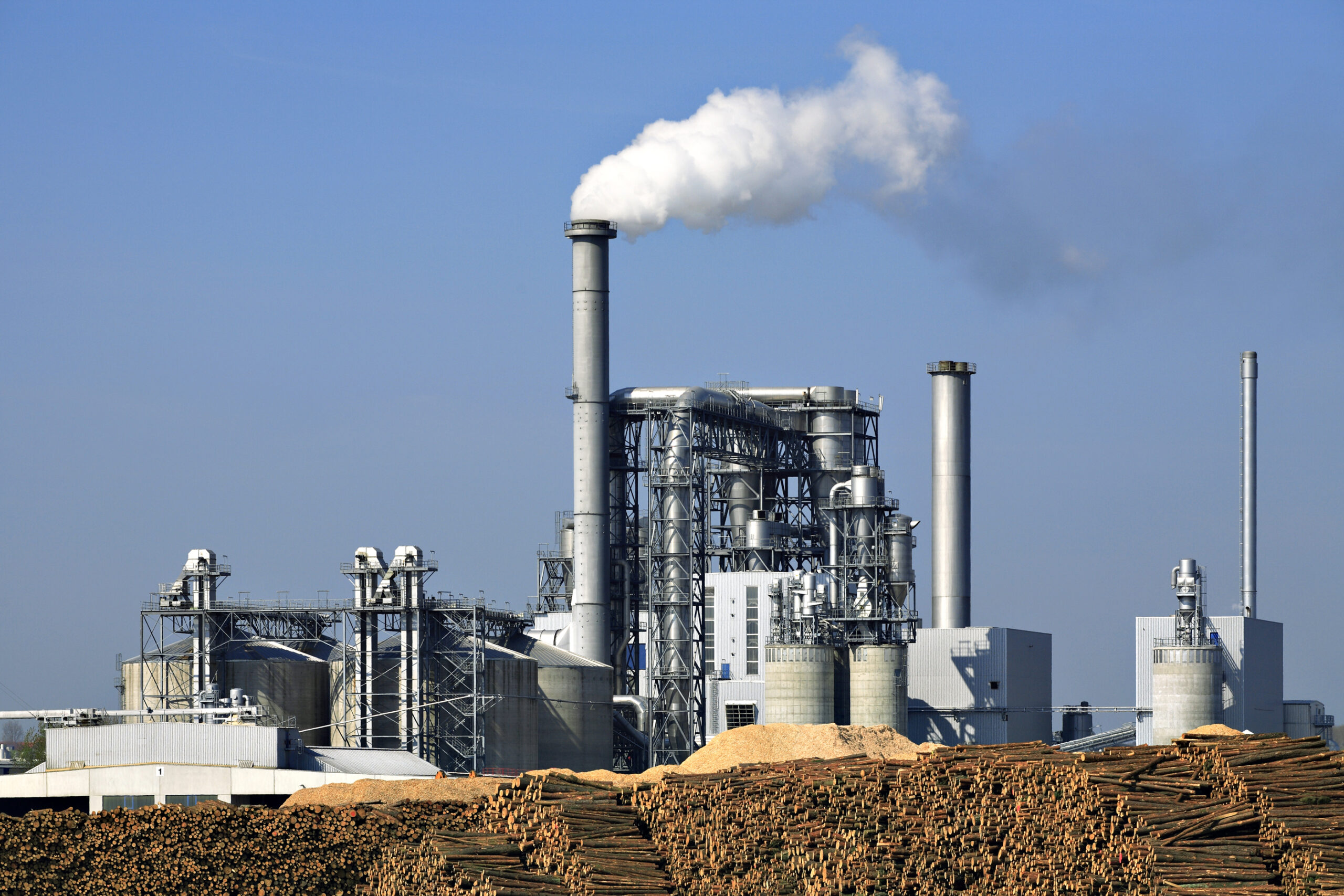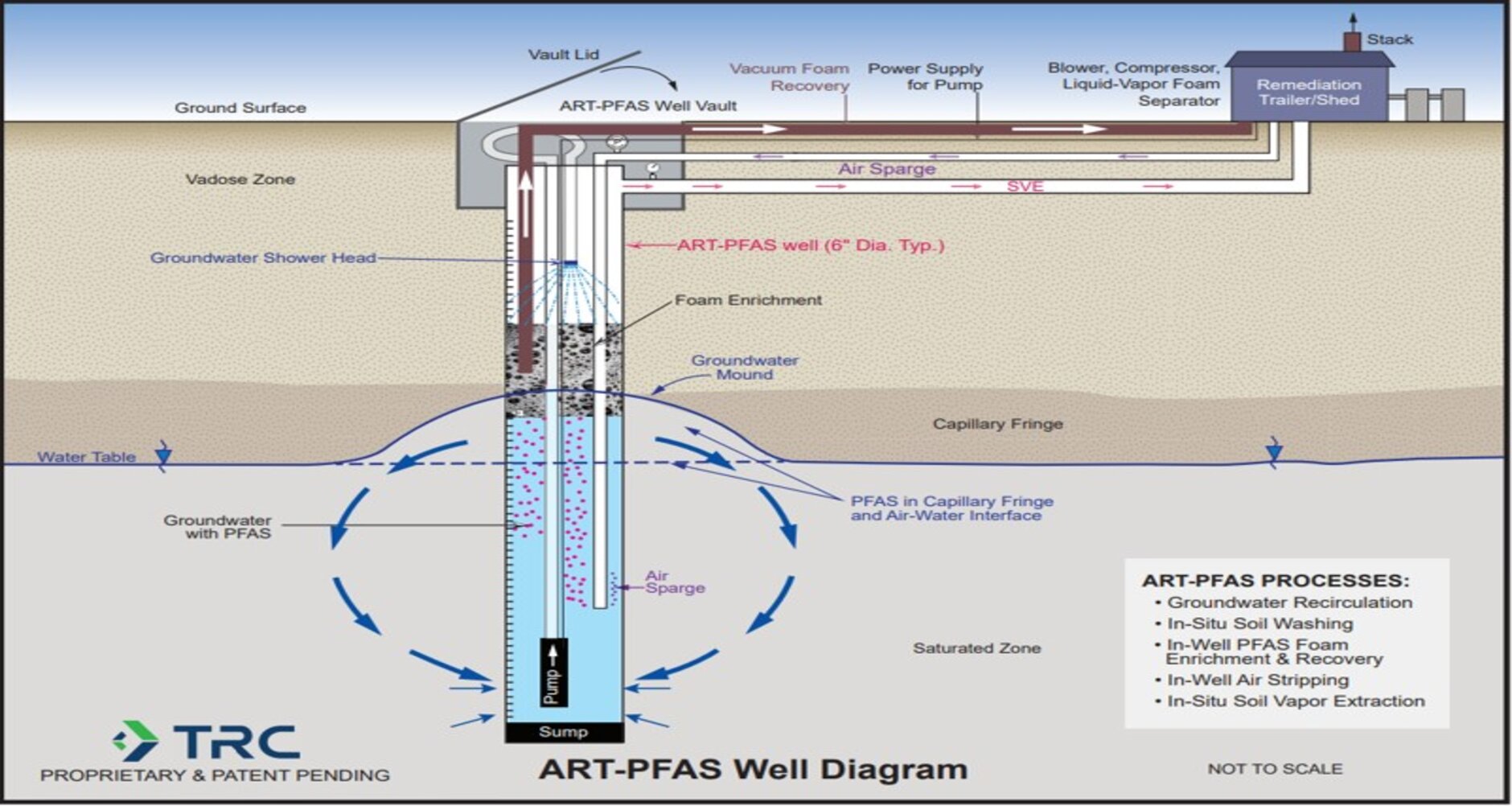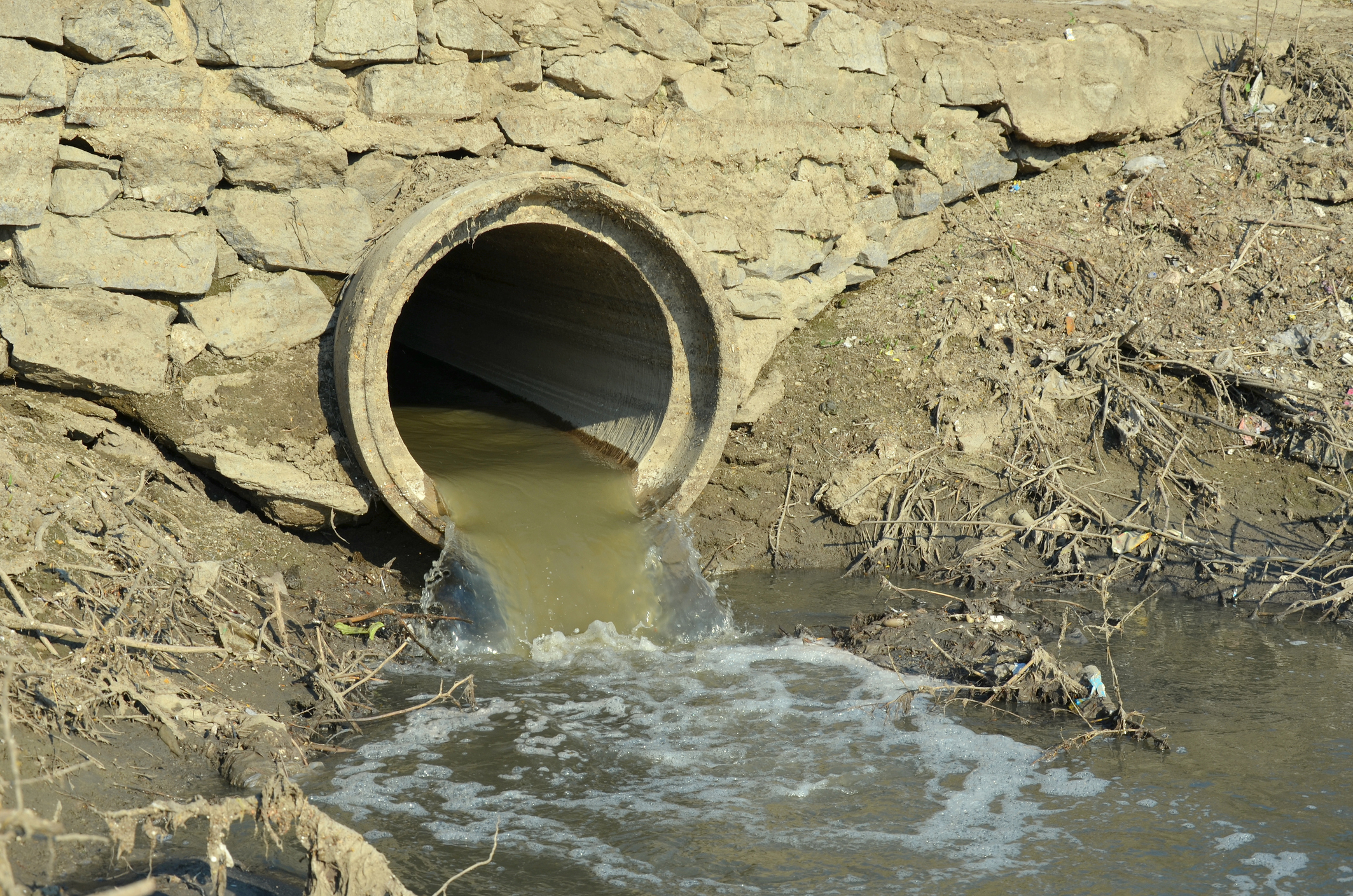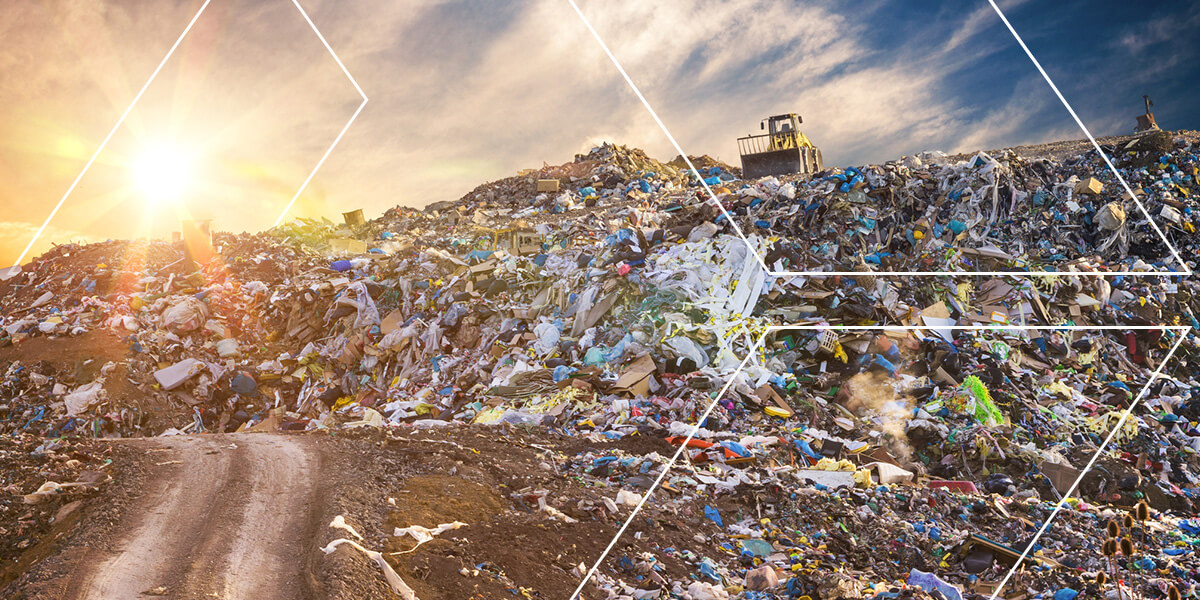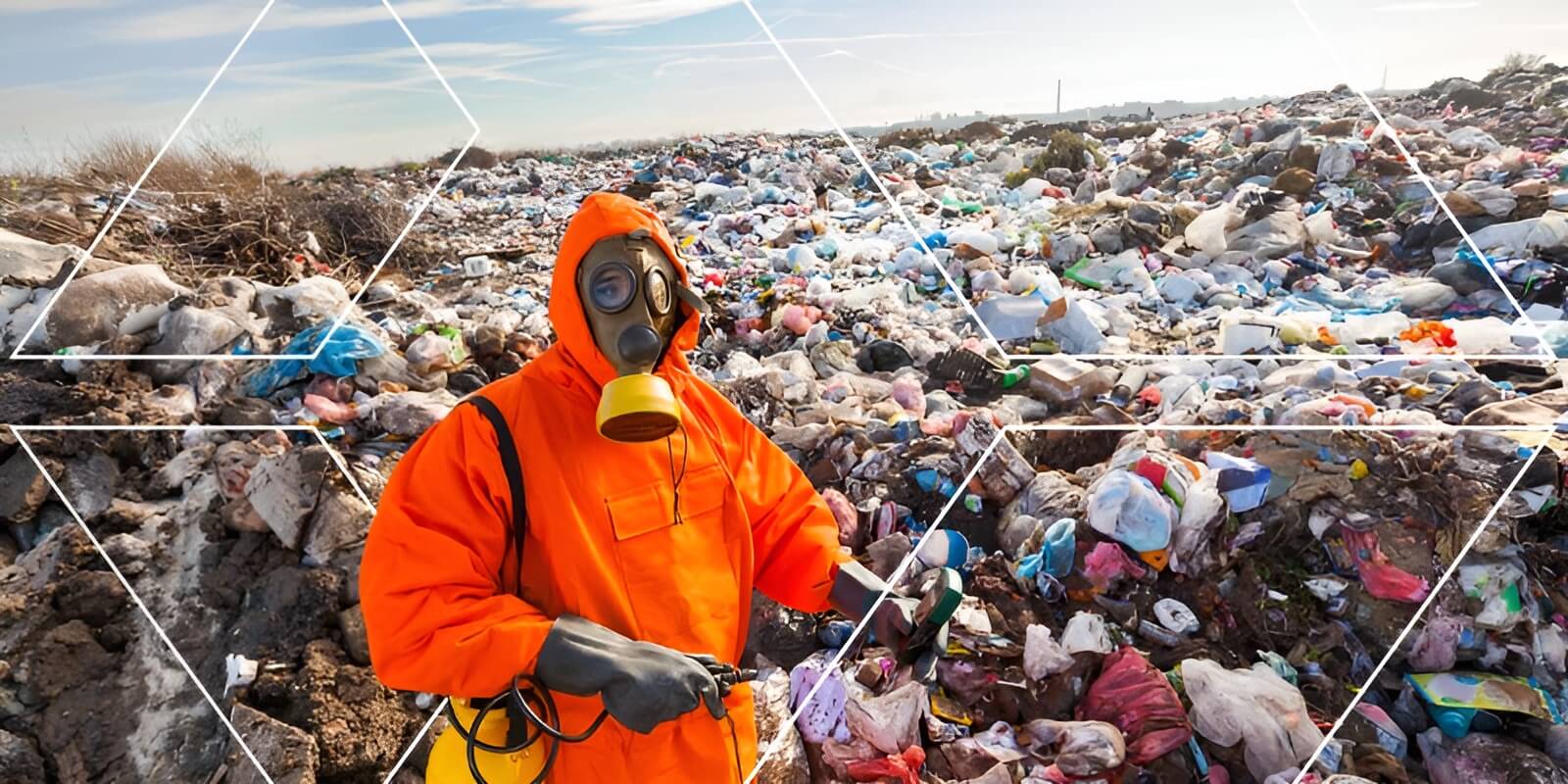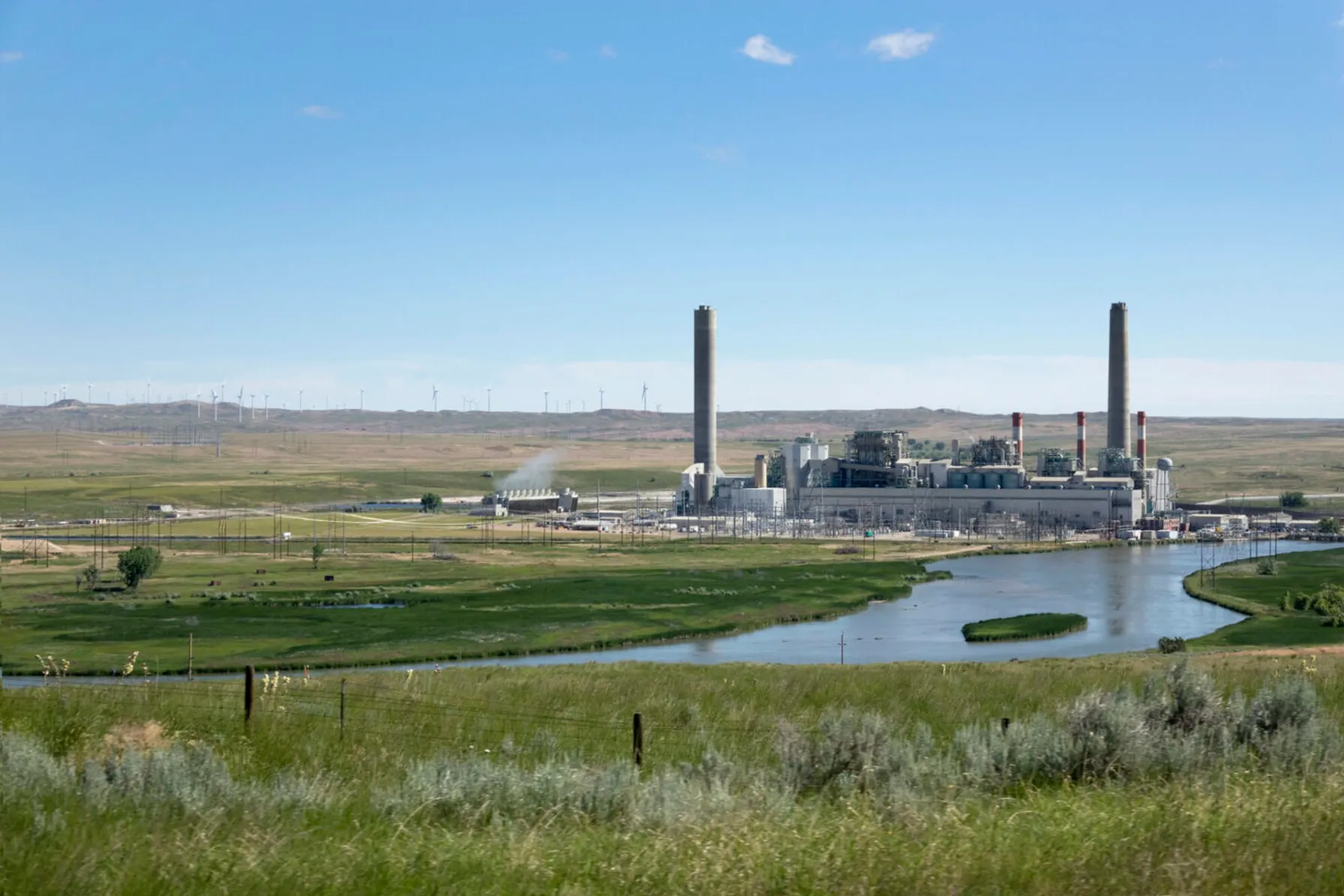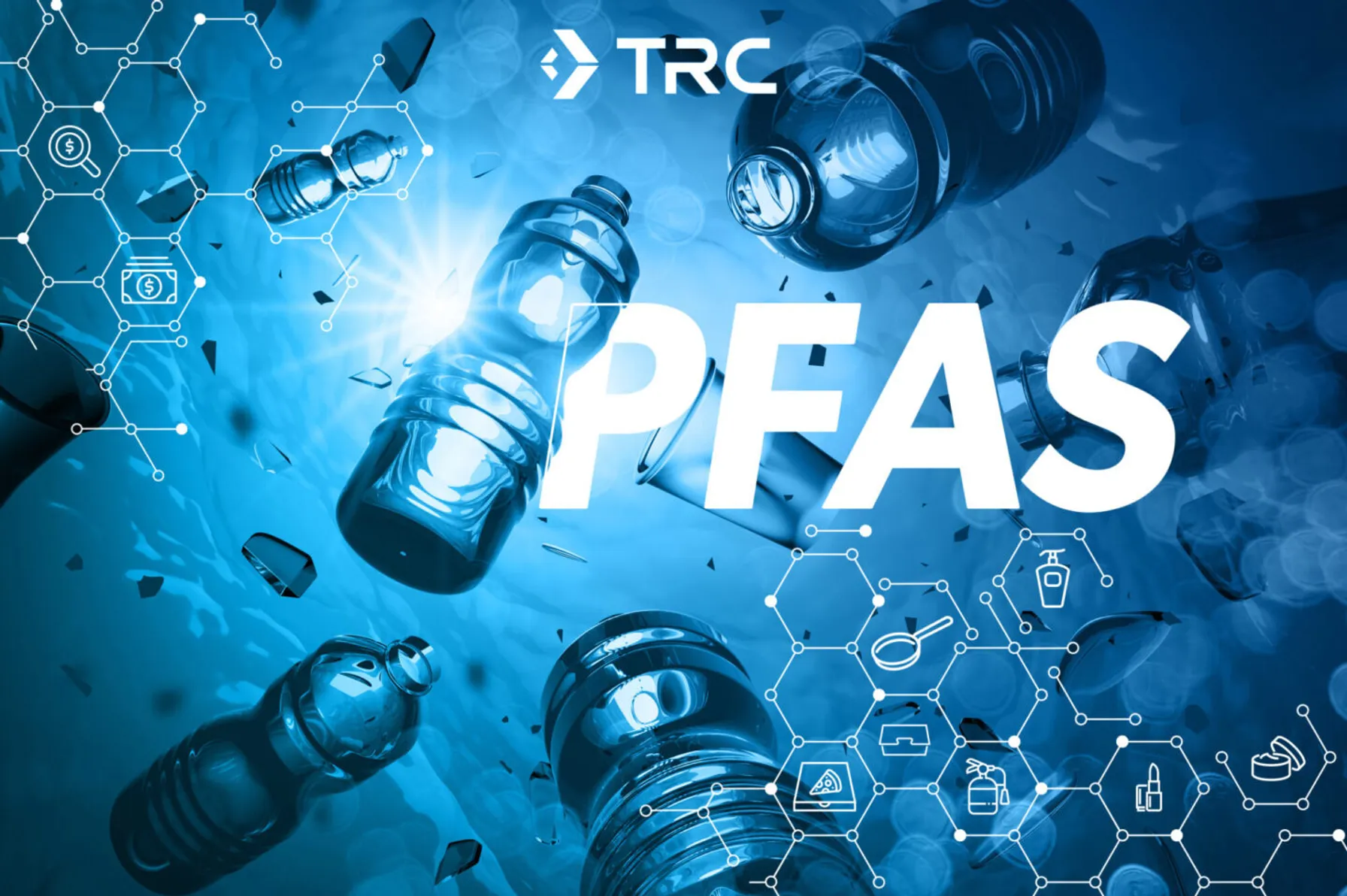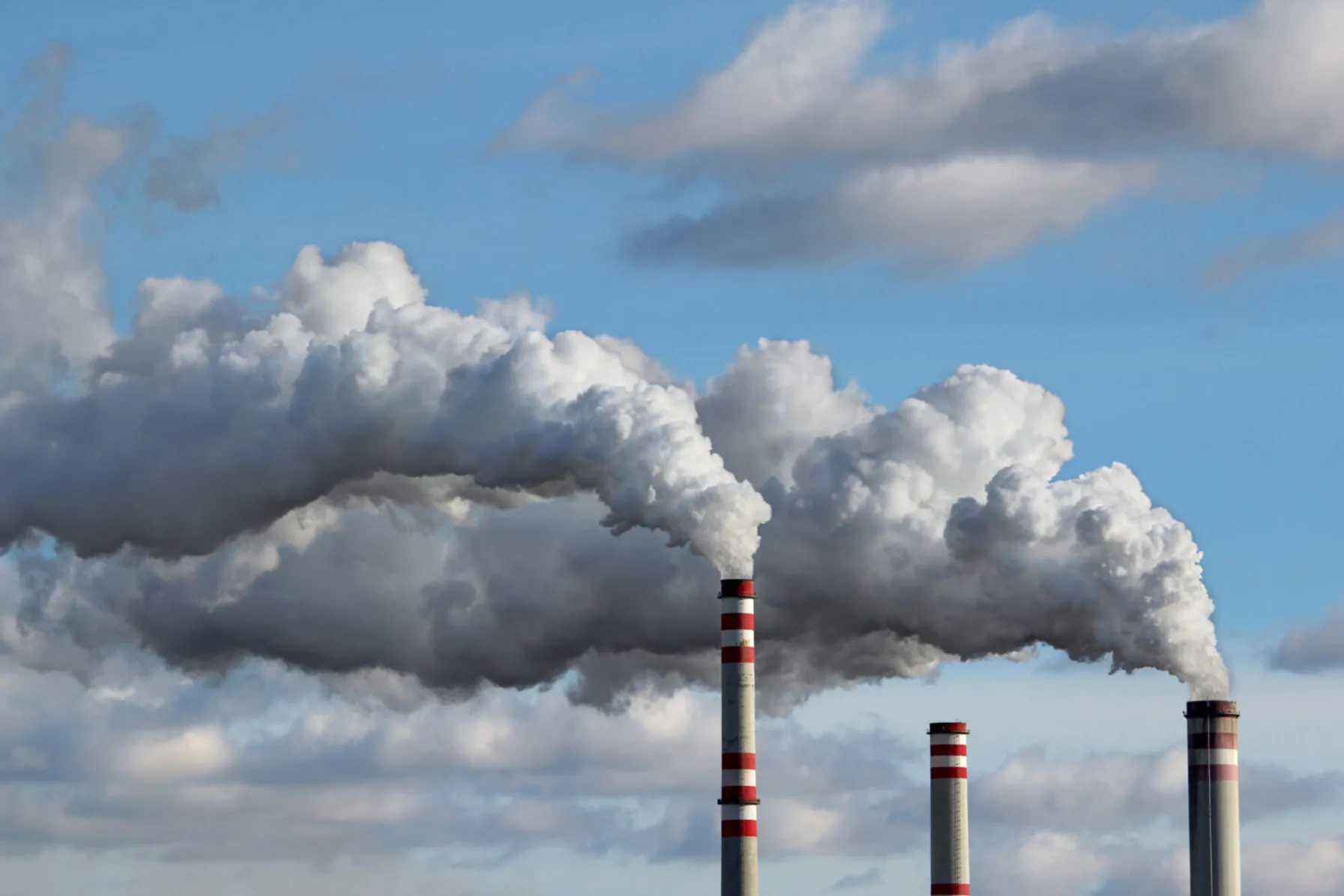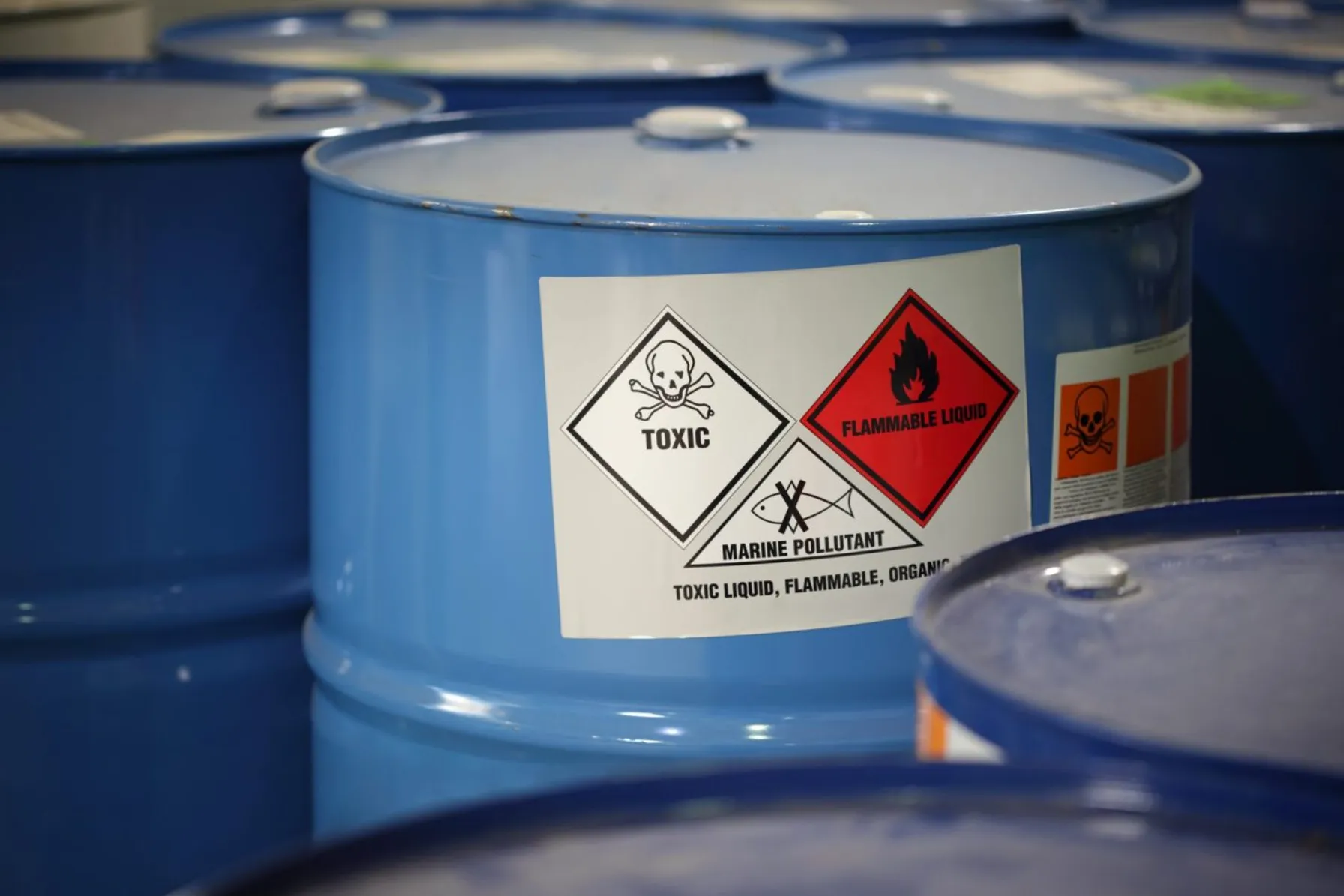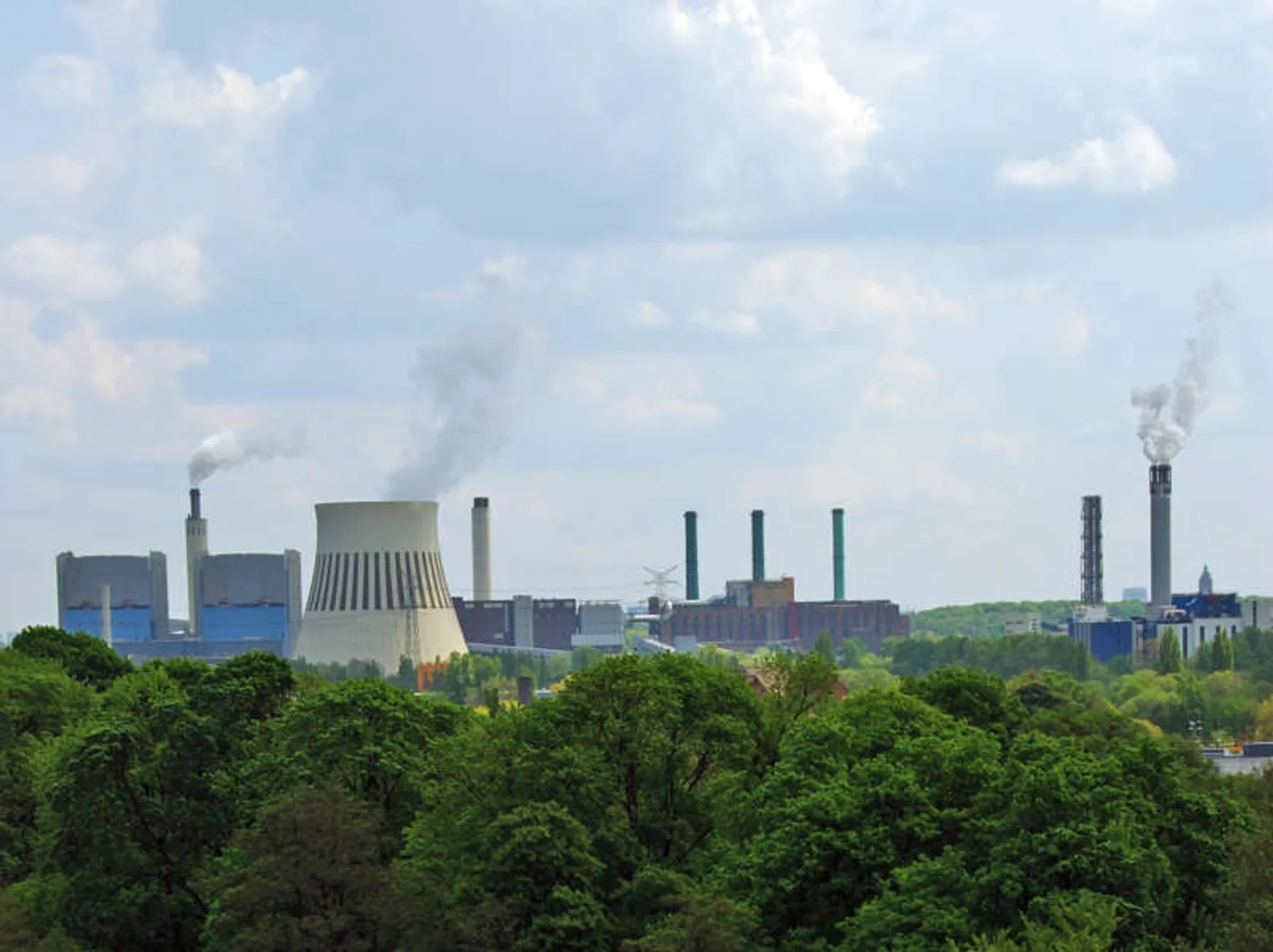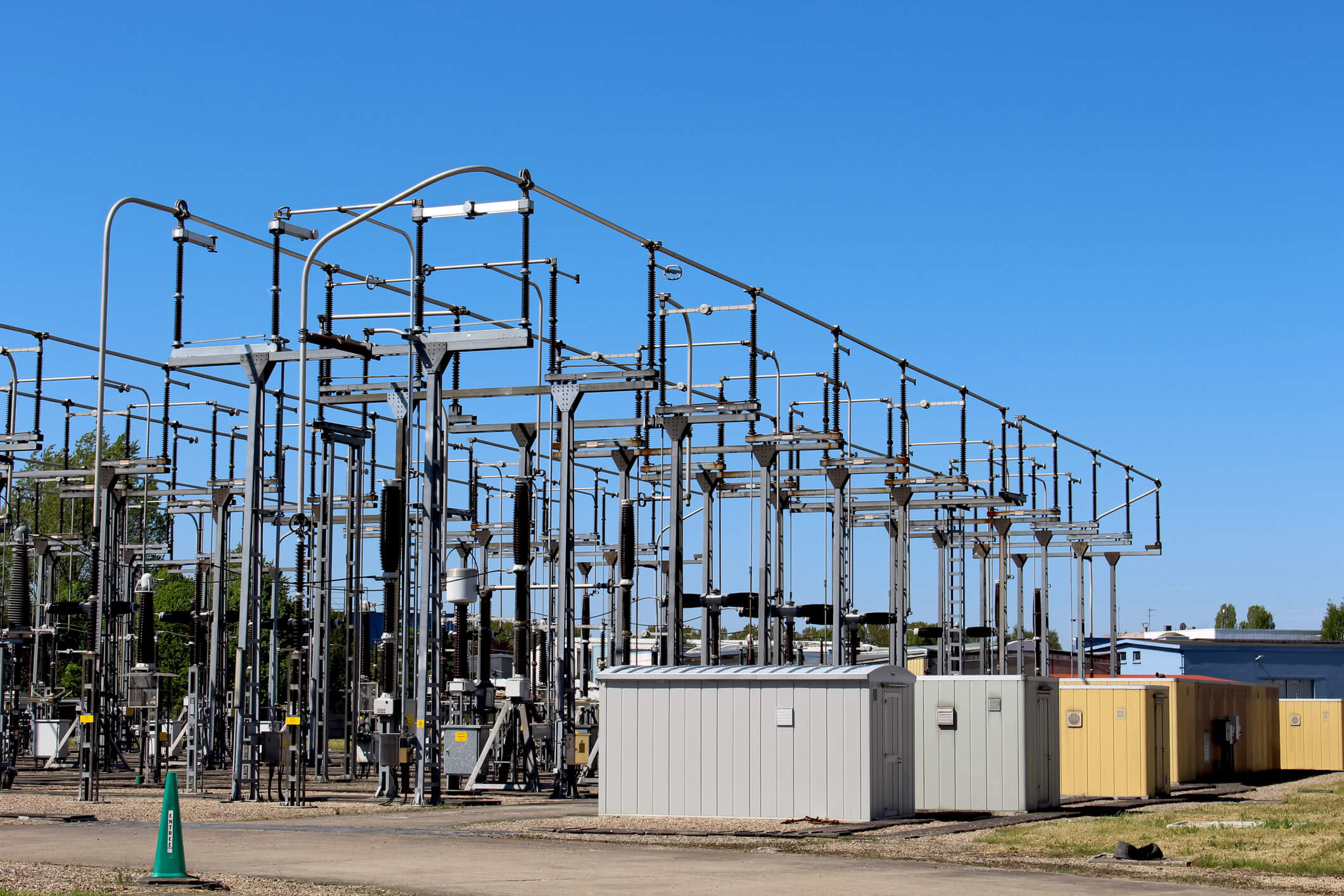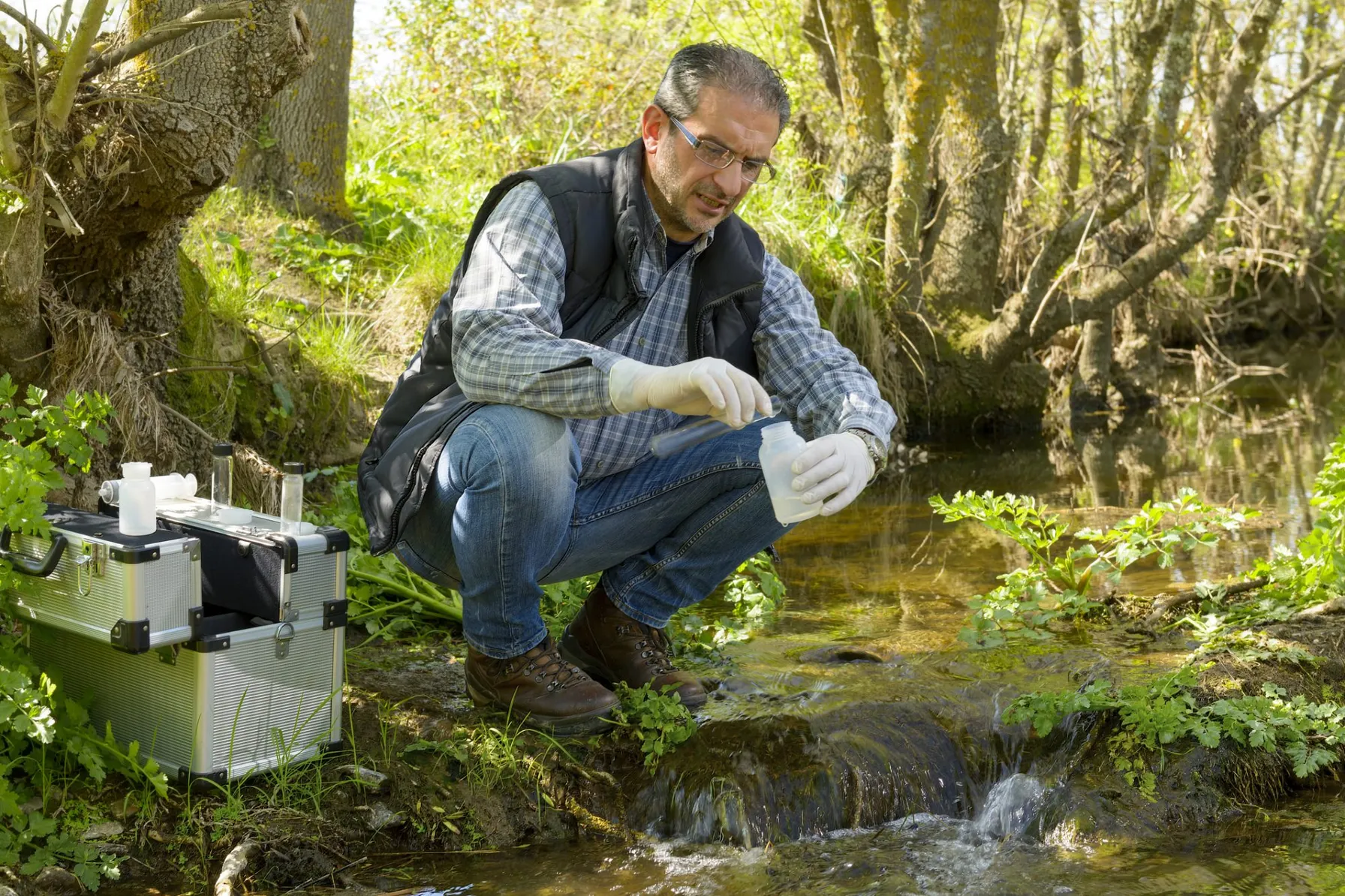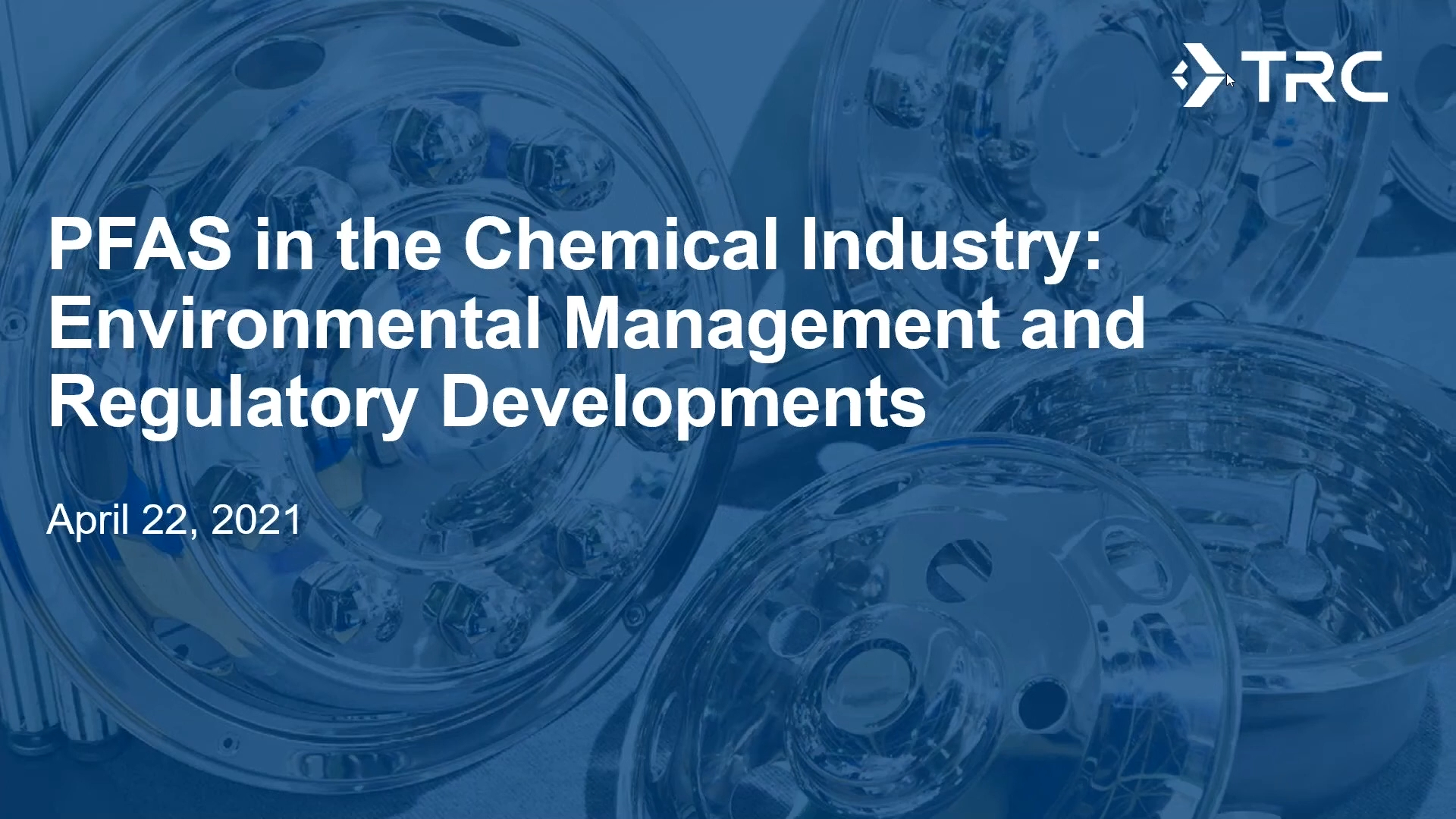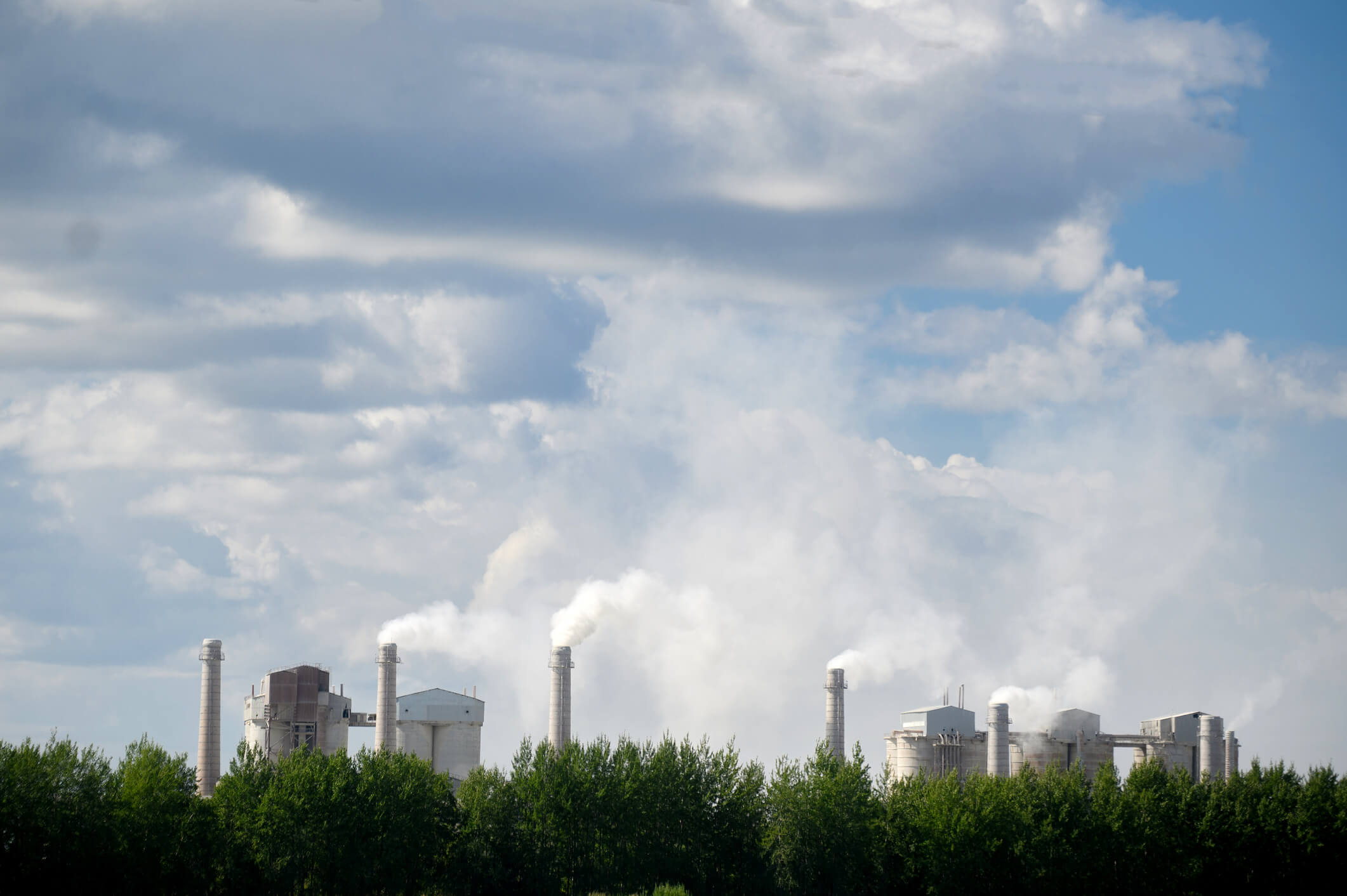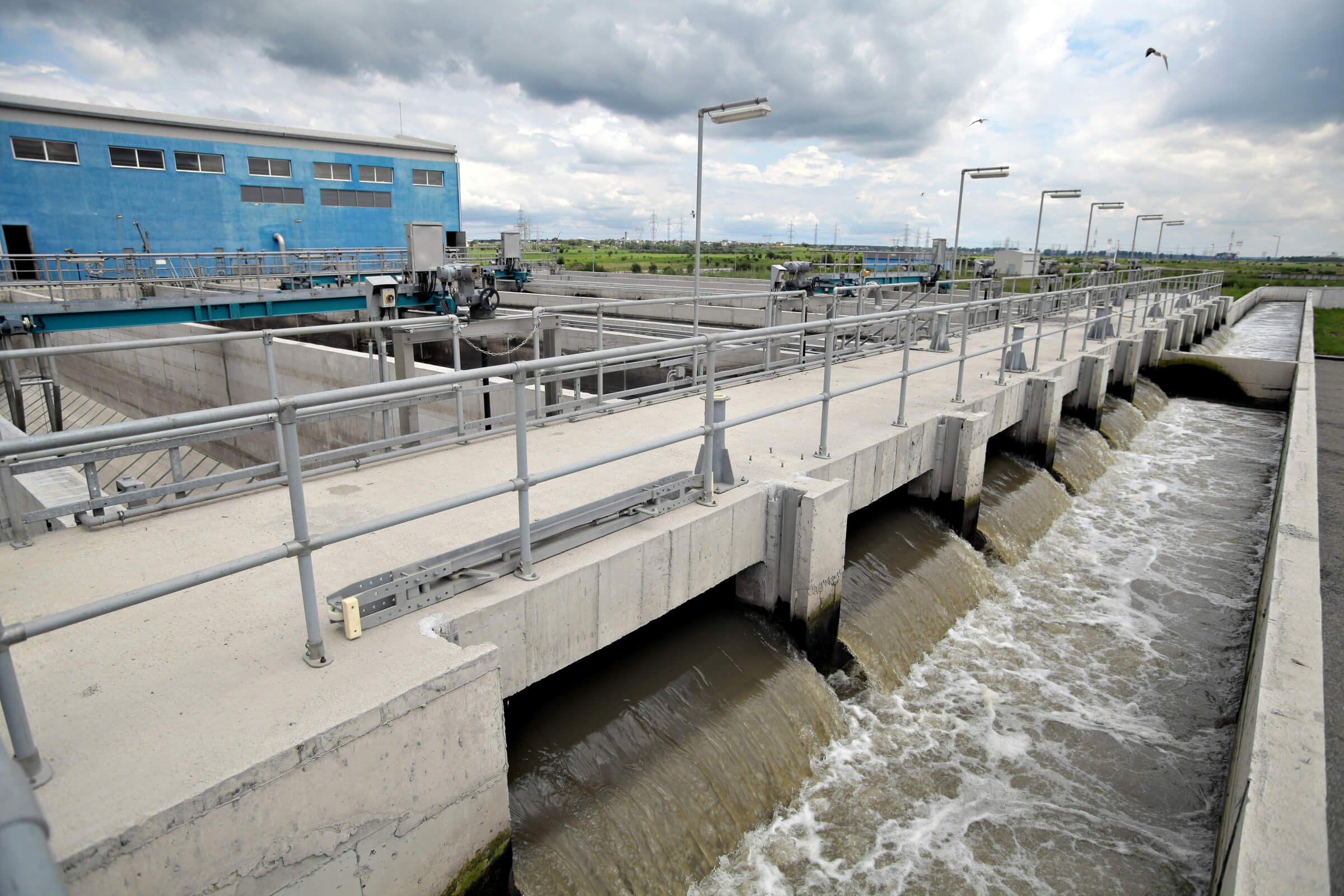Authors: Elizabeth Denly, Tom Dunder, & Gary Hunt | November 13, 2023
Understand the Concerns and Prepare for Potential Issues
PFAS (per- and polyfluoroalkyl substances) represent a group of persistent chemicals that can cause adverse health effects in humans. These chemicals are found in many household products, such as non-stick cookware and food containers. When products containing PFAS are discarded, such as to a municipal solid waste landfill, into municipal wastewater treatment facilities, among other potential disposal scenarios, they can often re-enter the natural environment. PFAS may be emitted to the atmosphere in the form of a gas or associated with particulate matter. These chemicals are extremely persistent and do not break down easily.
As more scientific discoveries are made about PFAS chemicals, and more stringent regulations emerge, it is important for facility operators and other impacted entities to understand the associated risks and to plan for mitigation.
Related Services
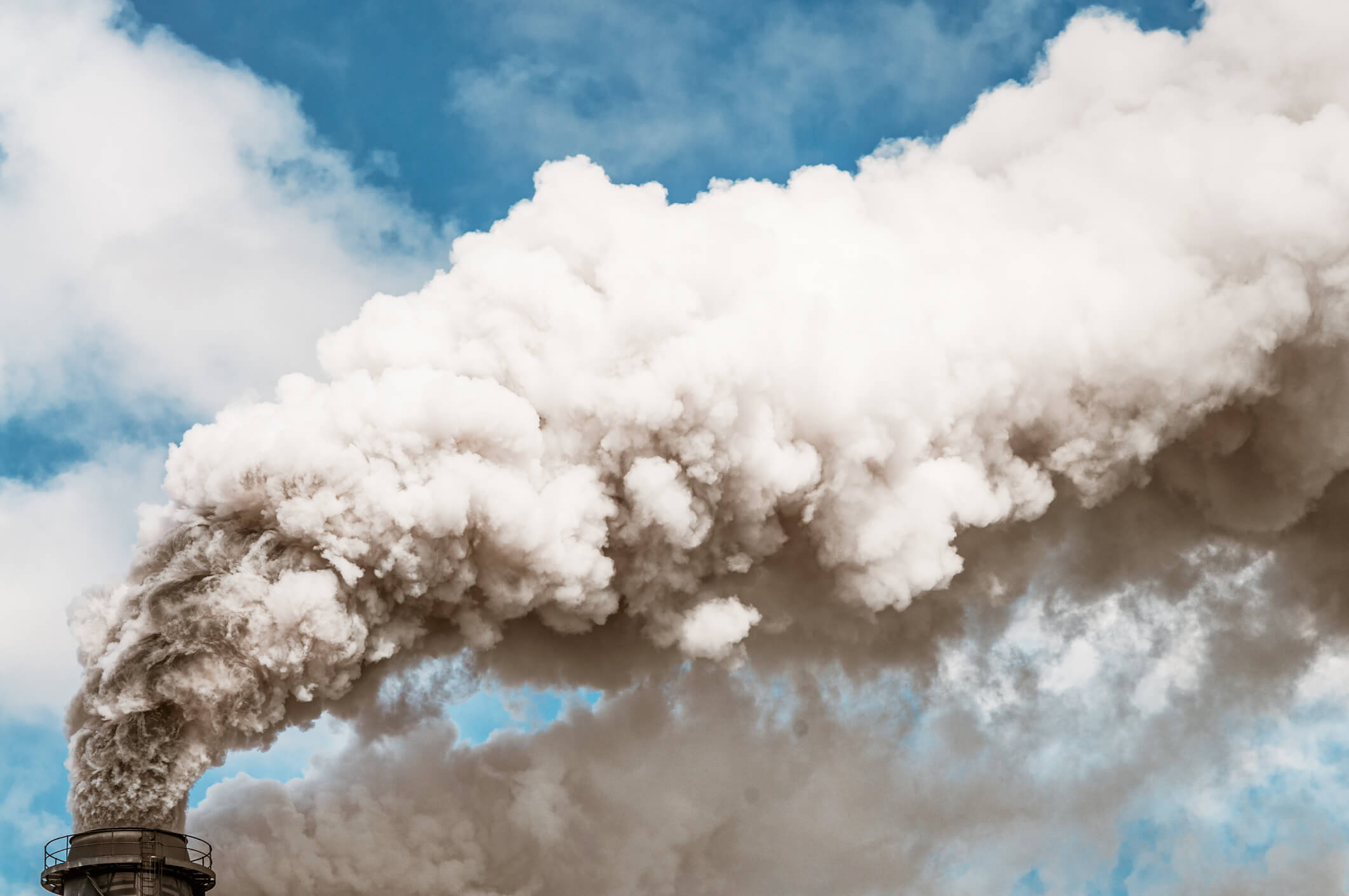
The Extent of PFAS Distribution in Air
Once PFAS enter the atmosphere, these compounds can remain airborne for long periods of time. As a result, PFAS compounds can be transported and deposited by wet and dry deposition onto soils and surface waters miles away from the original emission source. A study done by the North Carolina Department of Environmental Quality showed that PFAS (e.g., Gen-X) were detected in rainwater samples collected miles away from the Fayetteville Chemours Facility. This study shows how PFAS in air emissions from the Fayetteville Chemours Facility can remain in the atmosphere as an aerosol or adsorbed on particles, undergo atmospheric transport, and eventually be deposited remotely in rainwater. The rainwater in turn serves as a vehicle to facilitate movement of PFAS through the soil layer and potentially contaminating the underlying groundwater.
Similarly, a TRC-led study in Alachua, Florida showed that ambient air monitoring is an important tool for understanding PFAS in the atmosphere. This study used a modified high volume USEPA air sampling method to monitor PFAS concentrations in air. Results indicated that picogram per cubic meter (pg/m3) concentrations of several PFAS were detected. These data likely represent atmospheric background in the absence of any known emission source in the vicinity of the sampling site. Sampling performed by TRC at six other locations throughout the United States, as part of the same study, produced similar results confirming the ubiquity of PFAS in the atmosphere.
PFAS in Air is a Concern
As a result of their unique chemical and physical properties, PFAS deposited onto the ground and facilitated by rainwater can migrate through the soil into the underlying groundwater. This is a significant concern, as its ease of movement coupled with its persistence in the environment means that PFAS can enter drinking water aquifers, as has been seen in many states and municipalities in recent years.
Prepare for Potential Issues with PFAS Air Emissions
PFAS in air can impact PFAS levels in soil and water through deposition in areas far from the source. As more is learned about the pervasive nature of these chemicals and as the EPA and the states begin to develop more extensive PFAS regulations, being on top of the changes is becoming increasingly important for industry.
By understanding if your operation is using or emitting PFAS constituents, you will be able to develop effective plans to minimize, control and eliminate the source. It is important for your facility to work with a consultant who knows and understands the characteristics of PFAS compounds. Identifying PFAS requires more technical knowledge than typical environmental contaminants.
You can act now to identify and resolve potential current or historical liabilities that could result from direct or indirect sources of PFAS to the environment. Start by considering the following critical questions:
- Do you or have you ever used aqueous film forming foam (AFFF) at your site?
- Are you involved in any property transfers that may require testing for PFAS?
- Are due diligence activities being performed on your site that require PFAS testing?
- Are you prepared for the potential PFAS federal regulations (e.g., ASTM Phase I, CERCLA Hazardous substance designations, MCLs, TSCA, RCRA)?
- Are there neighboring sites which may have PFAS issues?
- How do you provide a defense that it is not your PFAS?
- Are you or will you be required to monitor for PFAS as part of wastewater discharges?
- Will you be required to monitor PFAS air emissions?
- Do you have a plan to manage potential risk associated with PFAS? Have you determined if your site is a low or high-risk site?

TRC Can Help
TRC’s PFAS experts plan and manage the entire process to ensure our clients are prepared before money is spent on unnecessary treatment, containment, or disposal systems.
With staff located across the United States, we have a close watch on how developing legislation will affect our clients’ future. Prior to investing in stack testing and/or ambient air monitoring, it is important to understand your current PFAS risk/liability and develop plans to mitigate the impact. Let TRC assess and reduce potential liabilities from PFAS releases – our goal is to give you peace of mind during times of legal and regulatory uncertainty.
TRC offers many PFAS-related services, including stack testing and air monitoring, that can help you evaluate and solve your emission problems. For assistance in understanding PFAS, how it can impact your business and how TRC can help, please contact one of our trained professionals listed below.
Sharing Our Perspectives
Our practitioners share their insights and perspectives on the trends and challenges shaping the market.
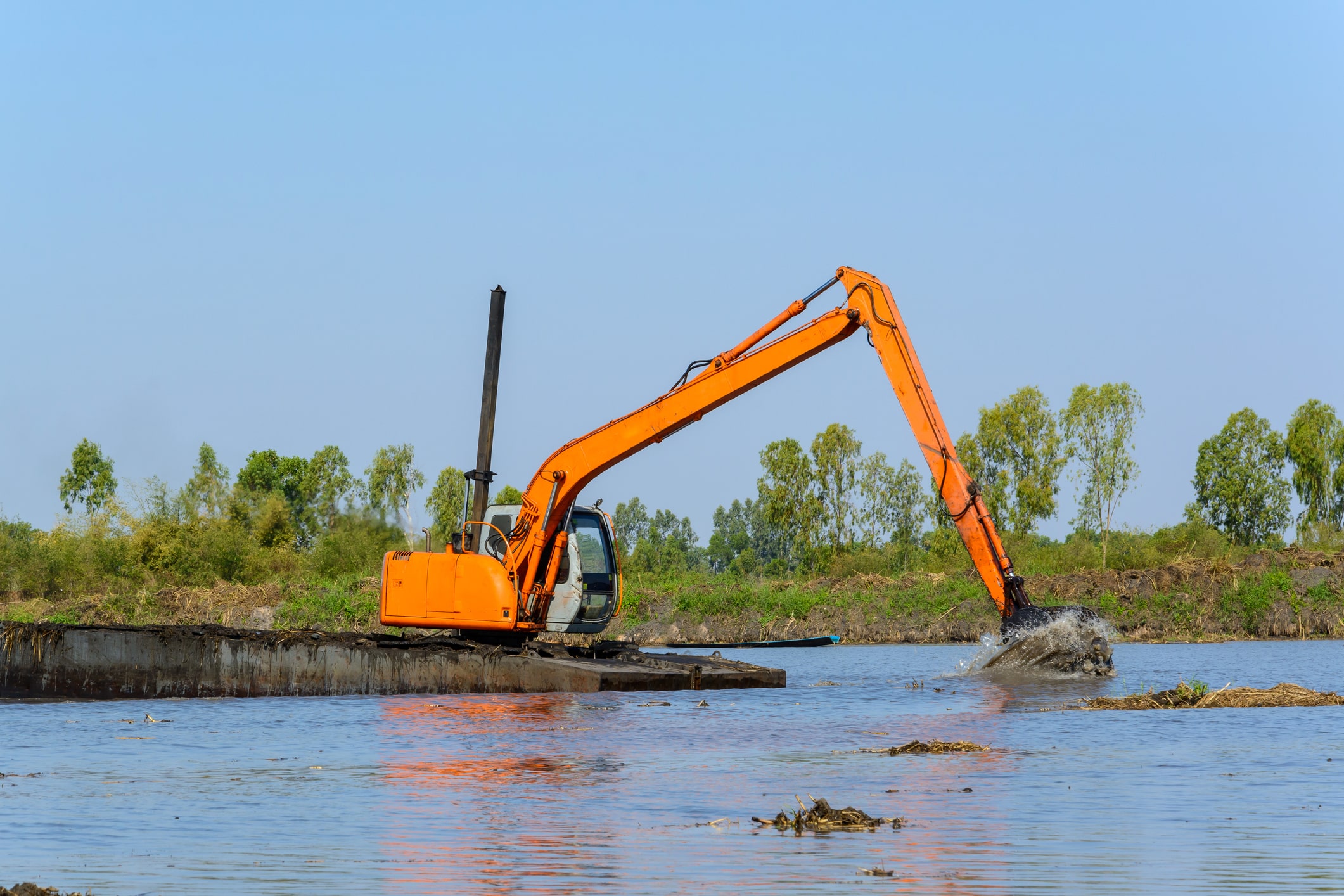
Treatment of PFAS to Allow for Beneficial Use of Impacted Dredged Sediments
July 18, 2024
Approximately 200 to 300 million cubic yards of sediment are dredged each year by the US Army Corps of Engineers (USACE) and other federal interests (USEPA, 2007).

Coming at You Fast – The Latest on RCRA and PFAS Regulations
March 1, 2024
The EPA published its Proposed Rule for Listing of Specific PFAS as Hazardous Constituents under the Resource Conservation and Recovery Act (RCRA).

New EPA Rule Impacts PFAS TRI Reporting and Supplier Notifications
November 20, 2023
What Affected Facilities Need to Know About Applicability, Reporting Changes and Deadlines

EPA Proposes Changes to Air Emissions Reporting Requirements (AERR)
August 30, 2023
The EPA is proposing updates to their Air Emissions Reporting Requirements (AERR) through amendments to 40 CFR Parts 2 and 51.

How Does PFAS Contamination Impact the Environment?
August 11, 2023
PFAS are widely used in the production of numerous products. Some PFAS chemicals are the by-product of manufacturing processes. As a result, PFAS contamination is widespread, with PFAS being found nearly everywhere in the world.

Helping Airports Identify and Mitigate PFAS Risks
May 30, 2023
This white paper focuses on some unique strategies and situations we have encountered at some airport sites.

EPA Finds Trichloroethylene Presents Unreasonable Risk in Final Risk Evaluation
April 6, 2023
On Jan 9, 2023, the United States Environmental Protection Agency (EPA) revised the Toxic Substance Control Act (TSCA) to reflect a new risk determination for trichloroethylene (TCE).

Proposed Use of a Hazard Index for PFAS National Primary Drinking Water Regulation (NPDWR)
April 4, 2023
The Proposed MCL and MCLG for the four PFAS, PFNA, PFHxS, GenX, and PFBS, considers their toxicity as additive. The EPA has proposed a HI of 1.0 as the MCL and MCLG for the four PFAS combined.

Proposed MCLGs and MCLs for PFAS
March 15, 2023
Final Regulatory Determination for Contaminants on the Fourth Drinking Water Contaminant Candidate List

QA and Chemistry Services
February 23, 2023
TRC offers many QA and Chemistry services including data usability assessments, limited and full data validation reports, quality assurance project plan preparation, selection of appropriate analytical methodologies and laboratory audits.
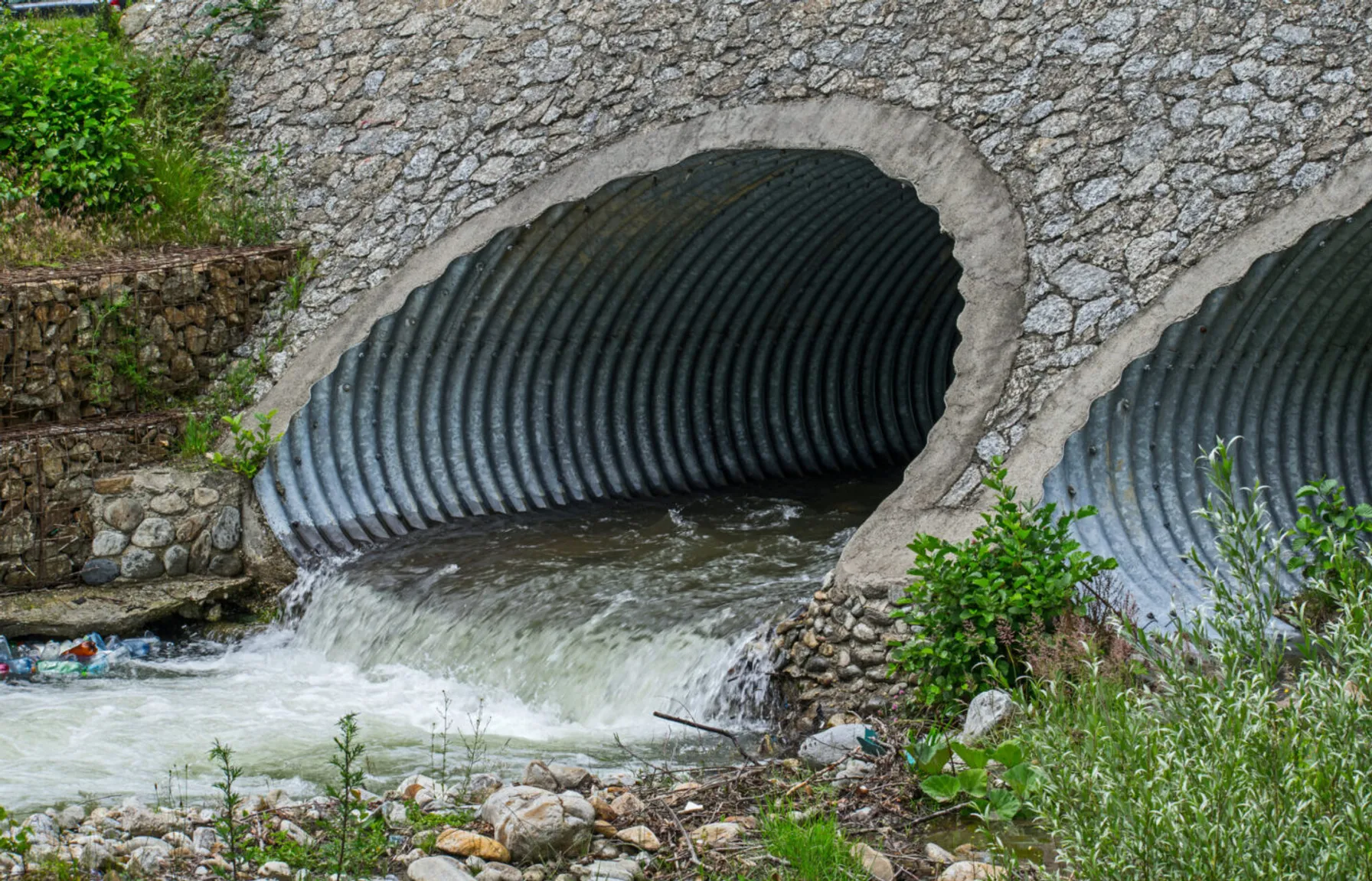
PFAS Fate and Transport
February 23, 2023
Understanding PFAS properties and behavior is key to effective detection and remediation.

PFAS Fate and Transport: Conceptual Site Models
February 23, 2023
The conceptual site model describes site-specific sources, release and transport mechanisms, exposure media, exposure points, exposure pathways and routes and potential human and/or ecological receptor populations.

EPA Announces $2 Billion in Funding to Address Emerging Contaminants in Drinking Water
February 14, 2023
Environmental Protection Agency Administrator Michael Regan announced $2 Billion in infrastructure funding to help the nation’s rural water supplies.
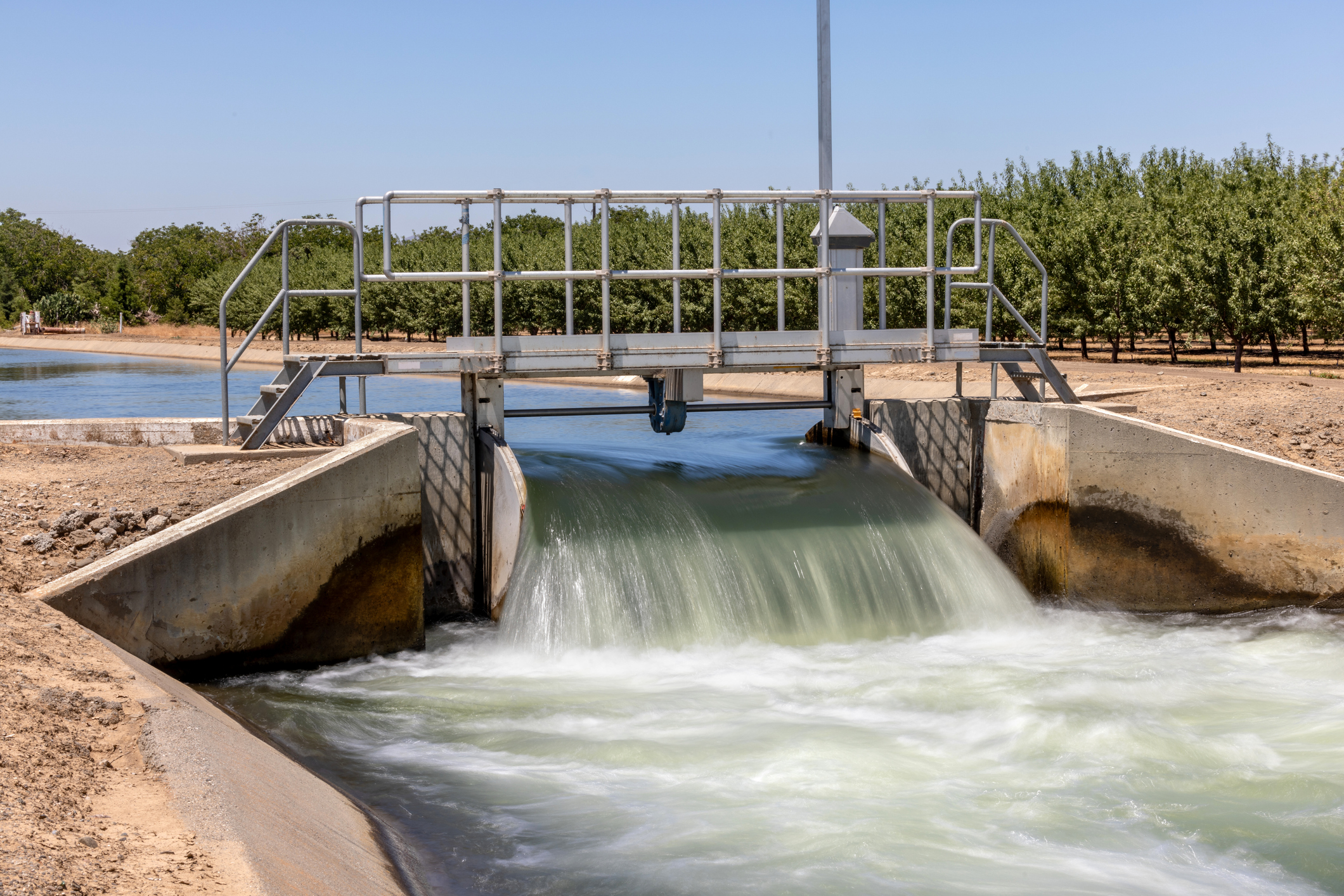
EPA Publishes Effluent Guidelines Program Plan 15
February 14, 2023
The EPA announced updated effluent limitations guidelines under Plan 15, focusing on the evaluation and rulemaking process for per- and polyfluoroalkyl substances (PFAS) discharges.

PFAS: Remedial Approaches
February 8, 2023
Remediating Per- and poly-fluoroalkyl substances (PFAS) from the soil and water requires effective techniques and innovative technologies. TRC’s experts are well versed in several remediation strategies intended to remove PFAS and prevent re-exposure.

TRI PFAS Reporting Requirements Continue to Expand
January 25, 2023
The list of PFAS for TRI reporting has increased to a total of 189 for reporting year 2023.
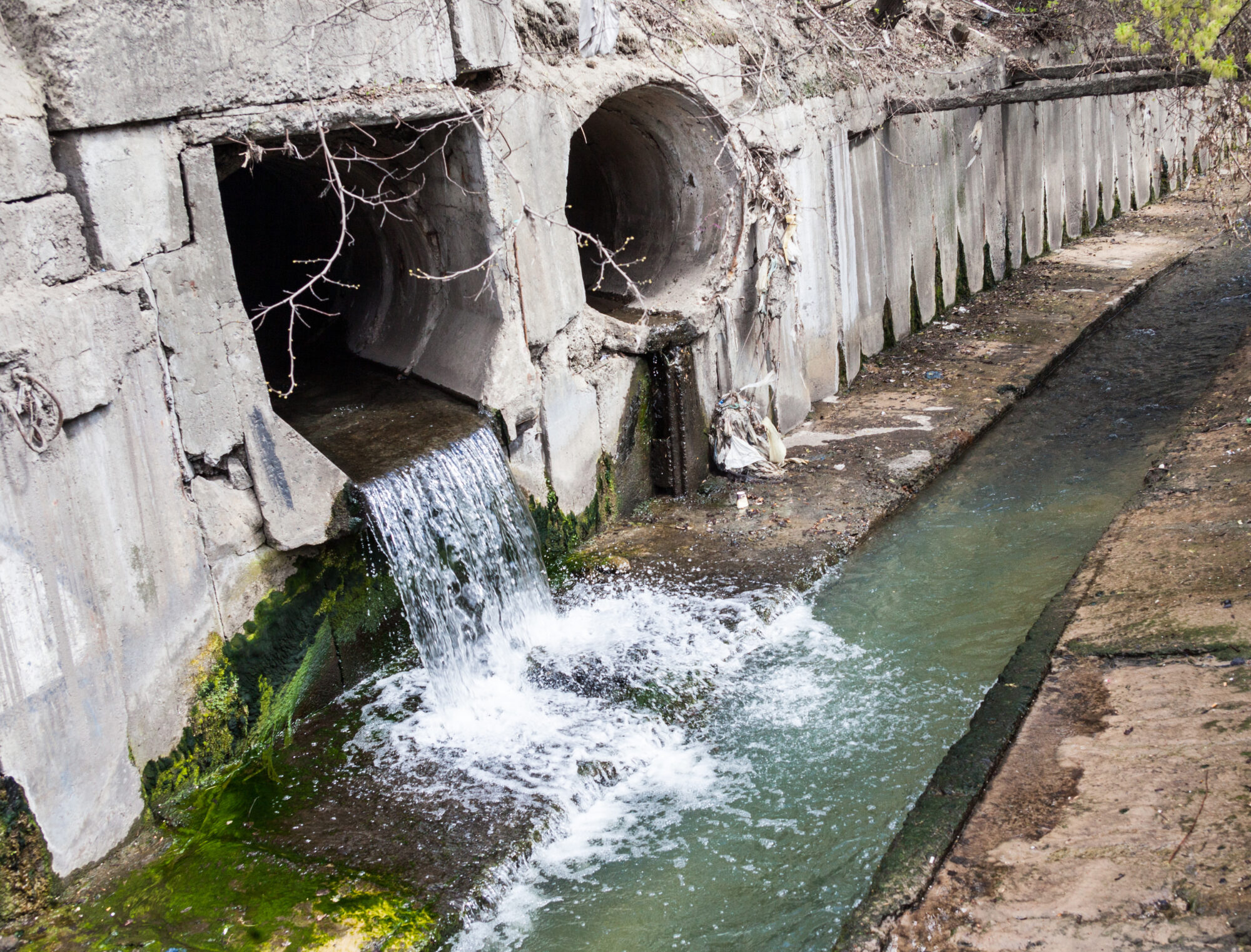
PFAS Discharges in NPDES Permits
December 19, 2022
In a follow-up to the EPA Office of Water’s April 28, 2022 memo, EPA released “Part 2″, providing guidance for the NPDES permitting/pretreatment program as it relates to restricting discharges of PFAS to water bodies.

Washington State Establishes PFAS Cleanup Levels
September 21, 2022
The Washington State Department of Ecology (Ecology) recently published a list of 6 PFAS compounds that now have soil and groundwater cleanup levels

New National Emerging Contaminants Research Initiative
September 12, 2022
The Executive Office of the President of the United States announced a National Emerging Contaminant Research Initiative

EPA Issues Proposed Rule Designating PFOA and PFOS as Hazardous Substances
September 7, 2022
The EPA has issued a pre-publication version of a proposed rule to designate two PFAS compounds as hazardous substances under CERCLA.

Five New PFAS Added to EPA Regional Screening Levels (RSLs)
June 24, 2022
EPA announced the addition of five new PFAS to the list of Regional Screening Levels (RSLs)

EPA Announces Updated Drinking Water Health Advisories for Four PFAS Chemicals: PFOS, PFOA, PFBS, & GenX
June 24, 2022
On June 15, 2022, the EPA released updated Health Advisory Levels for four per- and polyfluoroalkyl substances (PFAS) in drinking water

Integrating Sustainability, Digital Connectivity and Design Optimization in Wastewater Treatment Systems
June 20, 2022
Some organizations rarely think about water and wastewater treatment, until there is a problem. American industry depends on the ability to treat wastewater discharges while complying with regulatory standards and addressing emerging contaminants. If wastewater treatment fails, our environment is negatively impacted, and companies are exposed to shutdowns, delays and fines.

Worst Case Discharges of Hazardous Substances – Proposed Rule
May 25, 2022
In compliance with the Clean Water Act (CWA), the U.S. Environmental Protection Agency (EPA) recently proposed a new rule for onshore non-transportation-related facilities requiring specified facilities to plan for worst case discharges (WCDs) of CWA hazardous substances that could cause substantial harm to the environment.
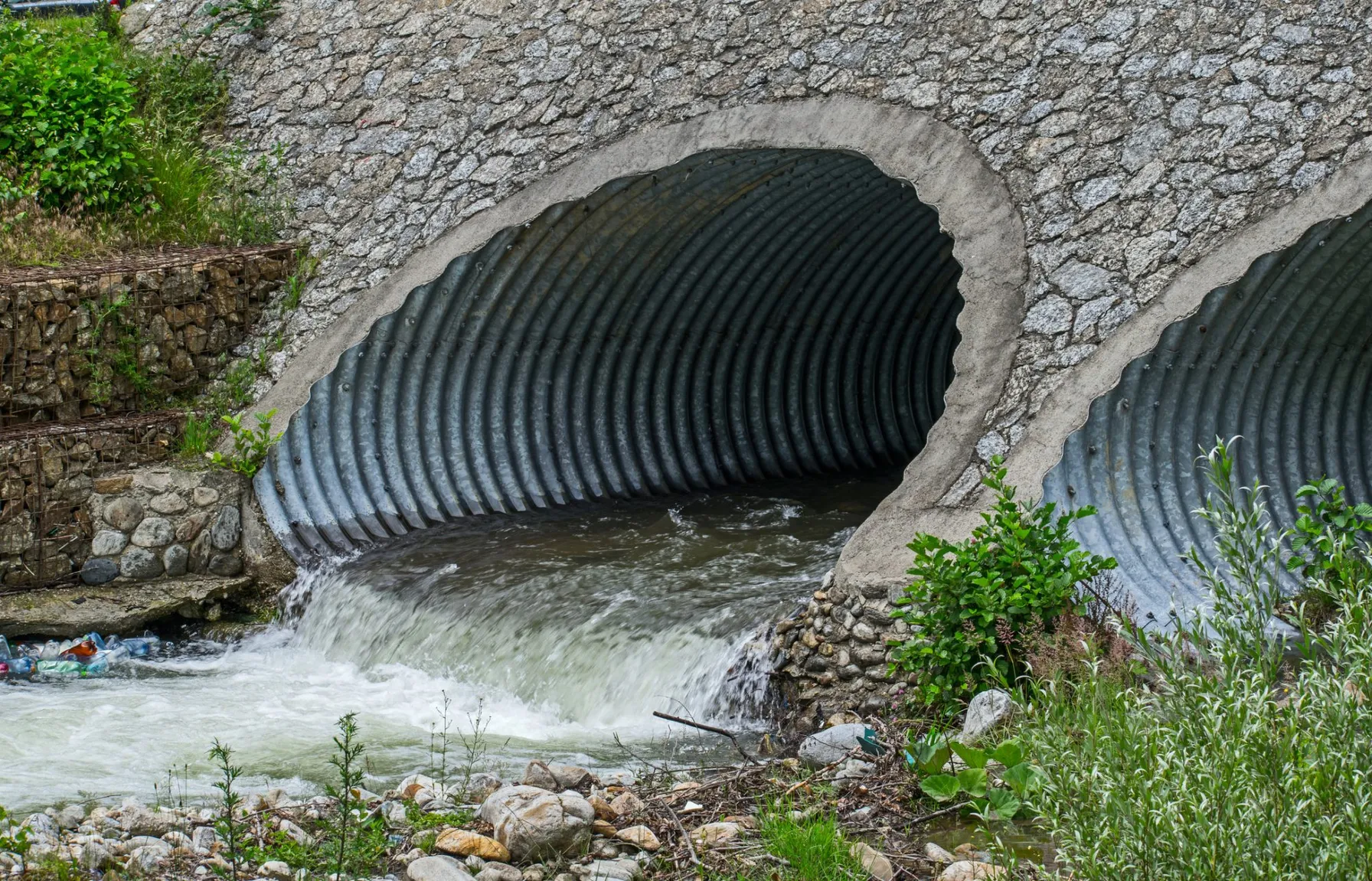
PFAS Discharges and NPDES Permits
May 25, 2022
On April 28, 2022, the U.S. Environmental Protection Agency’s (EPA) Office of Water released a memo addressing the use of National Pollutant Discharge Elimination System (NPDES) permits to restrict per- and poly-fluoroalkyl substances (PFAS) discharges to water bodies.

EPA Proposes Aquatic Life Criteria for PFOA and PFOS
May 25, 2022
On May 3, 2022, under the Clean Water Act (CWA), the United States Environmental Protection Agency (USEPA) proposed the first aquatic life criteria for both short-term and long-term toxic effects from Perfluorooctanoic Acid (PFOA) and Perfluorooctane Sulfonic Acid (PFOS).

SEC Releases New Proposed Rules Requiring Public Companies to Disclose Climate Risks
April 12, 2022
On March 21, 2022, the U.S. Securities and Exchange Commission (SEC) issued its proposed rules for The Enhancement and Standardization of Climate-Related Disclosures for Investors which would require public companies in the U.S. to disclose information in their annual financial reports.

PFOA & PFOS As CERCLA Hazardous Substances: What Does This Mean and How Can You Be Prepared?
February 17, 2022
A plan to designate two per- and polyfluoroalkyl substances (PFAS) as “hazardous substances” under CERCLA was recently submitted by the EPA.

New Phase I ESA Standard Will Affect Environmental Due Diligence
January 25, 2022
After years of review, revisions and discussions, the new ASTM E1527 Phase I Environmental Site Assessment (Phase I ESA) standard has been published. The new standard includes updates to definitions, clarifications on processes and requirements, and guidance for emerging contaminants.

Fifth Unregulated Contaminant Monitoring Rule Lists 29 PFAS
January 21, 2022
EPA published fifth Unregulated Contaminant Monitoring Rule as required every five years and 29 of the 30 contaminants listed are PFAS.

Need help collecting PFAS samples for NJDEP deadline December 15?
October 7, 2021
NJDES Category B or L Industrial Permit holders – If you haven’t obtained your first PFAS sample yet, time is running out. All New Jersey Pollutant Discharge Elimination System (NJDES) Category B or L Industrial Permit holders are required by the New Jersey Department of Environmental Projection (NJDEP) to collect two representative effluent samples, taken 30 days apart, to be analyzed for PFAS by an approved laboratory and submitted to them by December 15, 2021.

Interpretation of “Waters of the United States” (WOTUS) Reverts to Pre-2015 Regulatory Definition
September 29, 2021
Environmental Protection Agency (EPA) and U.S. Army Corps of Engineers (ACOE) revert to pre-2015 regulatory program definition of “Waters of the United States.”

EPA Solicits Comments on PFAS Discharges in Five Point Source Categories
September 23, 2021
EPA solicits comments in five point source categories (PSCs) in the manufacture, use, treatment and discharge of PFAS.

PFAS Air Emissions Standards and Trends for Summer 2021
August 17, 2021
Environmental impacts of PFAS in ambient air leads to states implementing PFAS air-related thresholds.

Cryptocurrency: The Environmental Threats and Opportunities
August 9, 2021
Cryptocurrency (also known as crypto) is taking the fintech industry by storm, despite the economic experts who still dismiss it as a viable form of currency. Although often criticized for this volatility, whistleblowers are also further shining a light on the severe toll that these digital currencies are taking on the environment.

TRC Colorado PFAS Regulatory Update
July 21, 2021
Update on Colorado’s recent policies and plans to regulate new and historical discharges of per- and polyfluoroalkyl substances (PFAS) into the environment.

2021 EPA TRI Reporting Requirements for Natural Gas Processing Facilities
July 12, 2021
Indication EPA finalizing a rule to add natural gas extraction or processing plants to EPCRA Toxics Release Inventory (TRI) reporting.

Implementing bioremediation at environmental cleanup sites: TRC experts weigh in at leading industry conference
May 17, 2021
TRC experts make several presentations at the Battelle conference about innovative approaches they have developed for implementing and monitoring bioremediation and the use of naturally-occurring or deliberately-introduced micro-organisms to break down environmental pollutants.
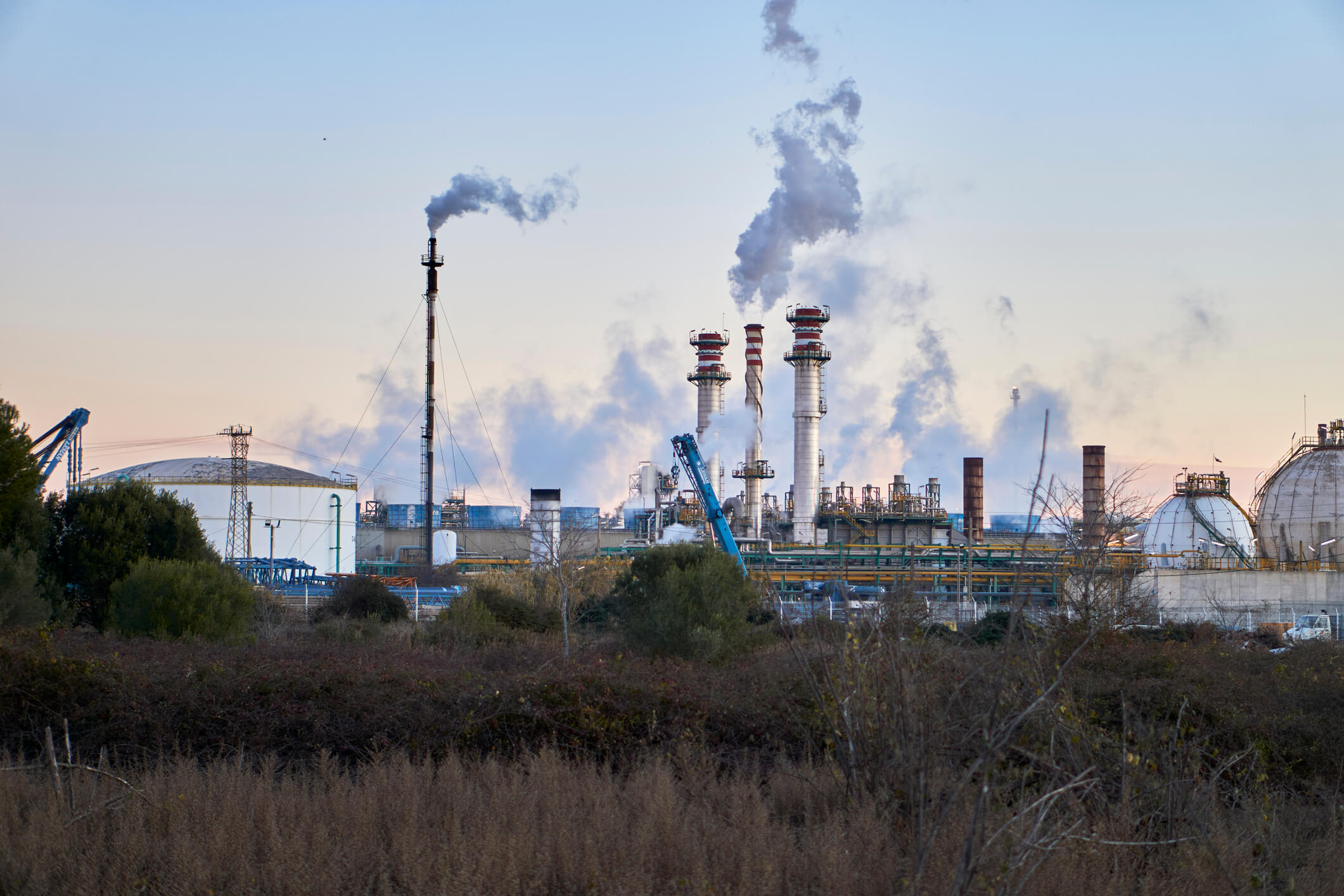
Interim Guidance on Destruction and Disposal of PFAS & Materials Containing PFAS
February 19, 2021
Interim Guidance from EPA identifies 6 materials that use or manufacture PFAS and approaches for disposal.
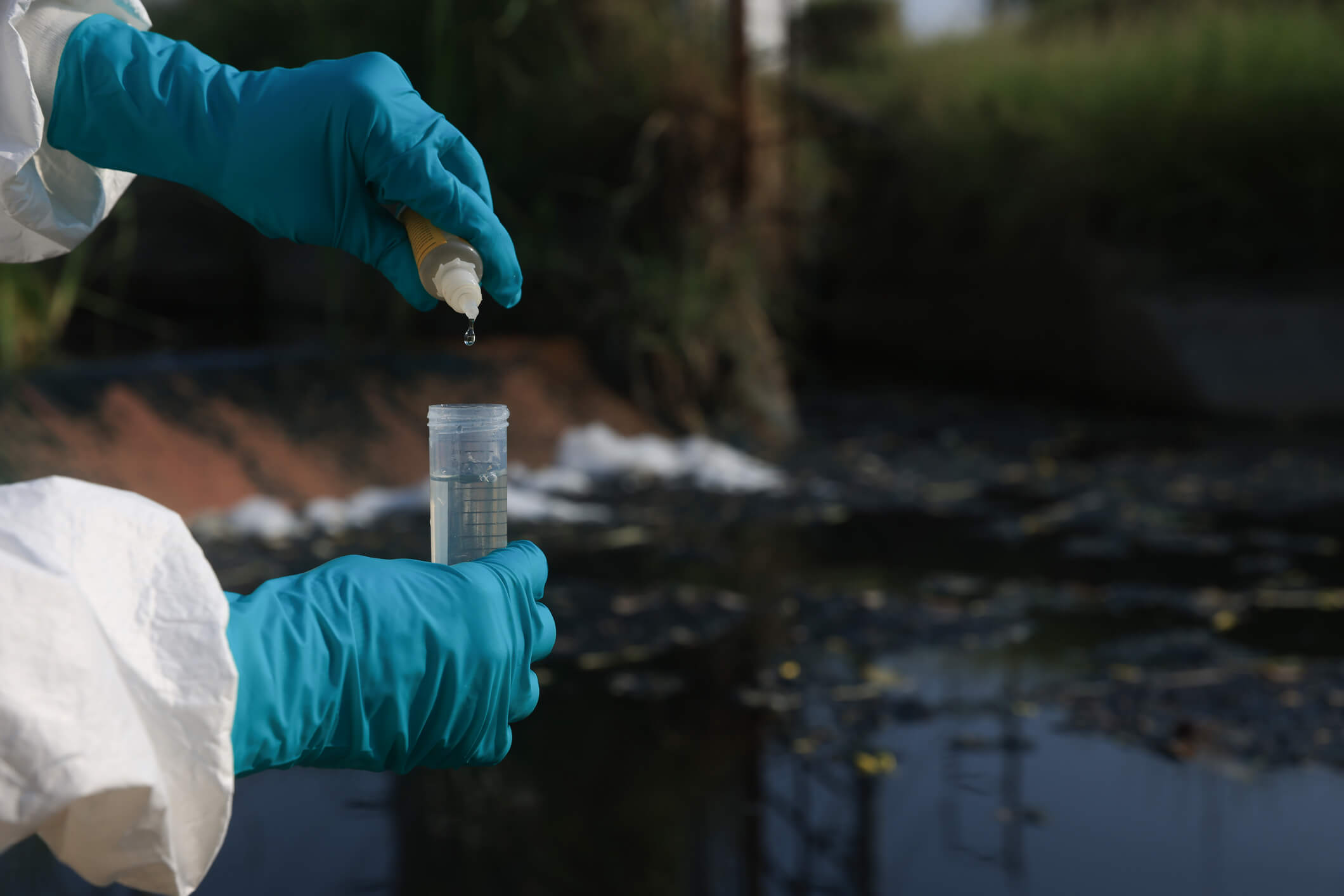
EPA continues to aggressively address PFAS wastewater with two new strategies
January 4, 2021
EPA takes steps toward PFAS wastewater and storm water permitting, and analytical methods for testing.

TRC Companies Inc. Acquires 1Source Safety and Health
November 11, 2020
TRC Companies (“TRC”), a leading technology-driven provider of end-to-end engineering, consulting and construction management solutions, has acquired 1Source Safety and Health, a firm that provides management consulting services in areas such as indoor air quality, asbestos management, industrial hygiene and safety management systems.

Ecological Risk of PFAS from AFFF-Impacted Sites
June 30, 2020
The facts on evaluating exposure to wildlife

TRC’s Reporting Tool Can Help Identify New PFAS under the TRI
May 19, 2020
While utilities often work in technical silos, NERC auditors are trained to cross check compliance evidence and data between interrelated standards.

Elizabeth Denly
Elizabeth Denly serves as TRC’s Vice President, PFAS Initiative Leader. She is also the Quality Assurance & Chemistry Director, responsible for the creation and implementation of the Quality Management Plan and standard operating procedures (SOPs) for field sampling and documentation protocols. Ms. Denly also leads Quality Coordinator networks, which are responsible for the development and communication of quality initiatives within the organization. She is a chemist with 29 years of consulting experience encompassing field and laboratory analyses and audits, QA/QC, data validation, and consulting for regulatory agencies. Ms. Denly is a leader in ITRC’s PFAS and TPH Risk Work Groups and in TRC’s Center of Research & Expertise (CORE) Emerging Contaminants Team and received the ITRC’s Industry Member of the Year Award in 2017. She is currently focusing on PFAS, specifically the nomenclature, chemistry, sampling procedures, QA/QC, and laboratory analytical methodologies, and has a significant role in educating clients, attorneys, and regulators about PFAS. As a senior QA specialist at TRC, Ms. Denly is responsible for providing QA/QC oversight in support of a variety of environmental investigations and remediation programs including risk-based soil cleanups, ambient air monitoring, and human health and ecological risk assessments. In this role, she has directed the preparation of QAPPs, coordination with the laboratory, selection of the appropriate analytical methodologies to achieve the desired remedial standards, oversight and performance of the data validation process, and determination of the usability of the data and achievement of data objectives. Ms. Denly has provided this oversight under different regulatory programs. Read more on Ms. Denly's bio page. Please contact her at edenly@trccompanies.com.

Tom Dunder
Tom Dunder is Technical Director in the Air Management Services Division at TRC Companies in Raleigh, North Carolina where he performs and manages air pollutant testing programs. He has degrees in Chemistry from Columbia (A.B.), Rutgers (M.S.) and the University of North Carolina (Ph.D.). Tom has 29 years of experience in gaseous pollutant emissions measurements at a wide variety of industries (refineries, chemical plants, power plants, paper mills, etc.) with recent work in biomass/biogas processes and emerging pollutants like PFAS. Contact Tom at tdunder@trcsolutions.com.

Gary Hunt
Mr. Gary Hunt is a Vice President and Technical Director within TRC in their Lowell, MA office. Mr. Hunt is an internationally recognized expert on many aspects of Persistent Organic Pollutants (POPs) and other emerging contaminants in the global environment. He is a subject matter expert on PFAS in the atmosphere including measurement, distribution, occurrences, transport and fate. In recent years He has served as a member of the TRC PFAS CORE (Center of Research and Expertise) Team and a frequent lecturer at PFAS workshops held in Massachusetts, Connecticut and Rhode Island. Mr. Hunt holds a B.S. in Chemistry from Villanova University (1974) and an M.S. in Environmental Sciences from Rutgers University (1977) and has 45 years of experience in environmental consulting. He has authored more than 125 journal manuscripts and symposia presentations on environmental topics, including POPs in the environment. Contact Mr. Hunt at GHunt@trccompanies.com.

